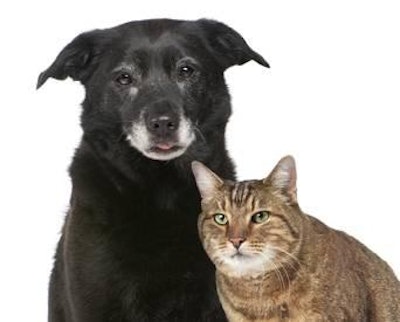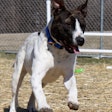
Today, 50% of dogs in the US are over the age of six. According to Dr. Sally Perea, DVM, senior nutritionist for Natura Pet Products Inc., in her presentation "The Latest Research on Senior Pet Nutrition," pets are living longer due to improved nutrition and veterinary care. As cats and dogs age, certain health concerns are common, no matter the species, breed or size, and consumers are looking for that food on the shelf that is specifically tailored to their elderly animals and their ailments. So what ingredients make up the formulas of these products and what do they do to aid pets and their parents through the transition to senior life?
Certain health concerns become more common as a pet ages, says Dr. Perea, such as:
- Overweightedness or obesity. Many senior pets have reduced energy requirements due to a decrease in lean body mass and activity level. Cats differ from dogs in that they are more likely to maintain energy needs with age; however, many cats entering their senior years are already overweight.
- Reduced immune function. Nutrition has a known role in maintaining immune function and multiple nutritional interventions have been evaluated as a means of boosting immune function.
- Cognitive function loss. As the nervous system ages, brain function can slow down. This slowing is referred to as cognitive dysfunction; pets may start to show less interest in play and interacting. Antioxidants may help slow this functional loss and help keep pets interested in life.
- Dental disease. Dental chews, special coatings on food and therapeutic foods available through vets are available to help with oral care, but the best prevention happens with daily teeth brushing which can be done regardless of what food is preferred and fed. More palatable foods may be helpful, too.
- Osteoarthritis . A lifelong study in dogs has shown that becoming overweight increases the prevalence of hip and shoulder joint problems and increases the severity of elbow joint osteoarthritis. One osteoarthritis study evaluated a population of cats, and found that 33.9% had radiographic signs of degenerative joint disease.
Senior petfoods need to address these health concerns to best meet the needs of the growing population of elderly cats and dogs in the US. These foods should consider dietary modifications such as the distribution of macronutrients, ingredient selection and supplementation with key nutrients. One study in dogs (Kealy RD et al., 2002) has shown that maintaining a lean body weight throughout life reduces the onset of age-related diseases and increases lifespan by almost two years. A healthy, balanced diet is the key to an animal's longevity and vitality. Formulas with nutritional modifications for reduced energy density, kibble density and fat levels, with added dietary fiber and higher-quality protein, appeal to the pet parent trying to keep an animal trim in old age.
According to Perea, senior pets require higher protein levels to maintain lean body mass when compared to younger pets. One study compared protein requirements for senior dogs (12 to 13 years of age) to their younger counterparts (1 year of age). Young dogs were more efficient, requiring 0.4g of nitrogen/kg bw/day to replace liver and muscle protein reserves, versus 0.6 g nitrogen/kg bw/day in senior dogs. While protein aids functionality in canines, L-carnitine has been shown to increase the rate of weight loss in obese felines (Center SA et al., 2000).
Pets who maintain an ideal body weight as they transition into the last stage of their lives are provided some relief from another health concern: joint pain. With age, joints wear down and can be a source of discomfort, often diagnosed as osteoarthritis. Certain nutrients can help with senior joint health, such as glucosamine, chondroitin sulfate and long-chain omega-3 fatty acids (EPA and DHA). Glucosamine and chondroitin sulfate are building blocks for the “cushion” in joints and have been shown in vitro to have anti-inflammatory effects and prevent breakdown of joint components. EPA and DHA also reduce enzymes that break down connective tissue which can cause joint damage, and recent reports have demonstrated improved clinical conditions in dogs and cats with osteoarthritis when supplemented with long-chain omega-3 fatty acids.
Immune function is known to decline with age in senior pets. Dietary supplementation with β-carotene has been shown to stimulate cell mediated and humoral immune response in dogs, as well as reverse declining immunological responses in senior dogs (Chew BP et al., 2000). Vitamin E has a well-defined antioxidant role within the body and may also indirectly enhance immune factors, says Perea. Increased dietary vitamin E levels helped to maintain lymphocyte proliferative activity in aged dogs. Antioxidants can help prevent oxidative damage to cells. Oxidative damage is theorized to be a leading cause of the signs of aging. Antioxidants from fruits and vegetables can be helpful in defending against oxidative damage in senior pets with ingredients like tomatoes, spinach, grape, carrot and citrus.
Perea theorizes that the future of senior pet nutrition research will be in the use of genomic screening techniques to recommend diets, nutrigenomic techniques to evaluate how nutrients and age affect genetic expression and further identification and characterization of canine and feline microbiota and the effects of age. What will you be using to help formulate your senior diets in five years?

















